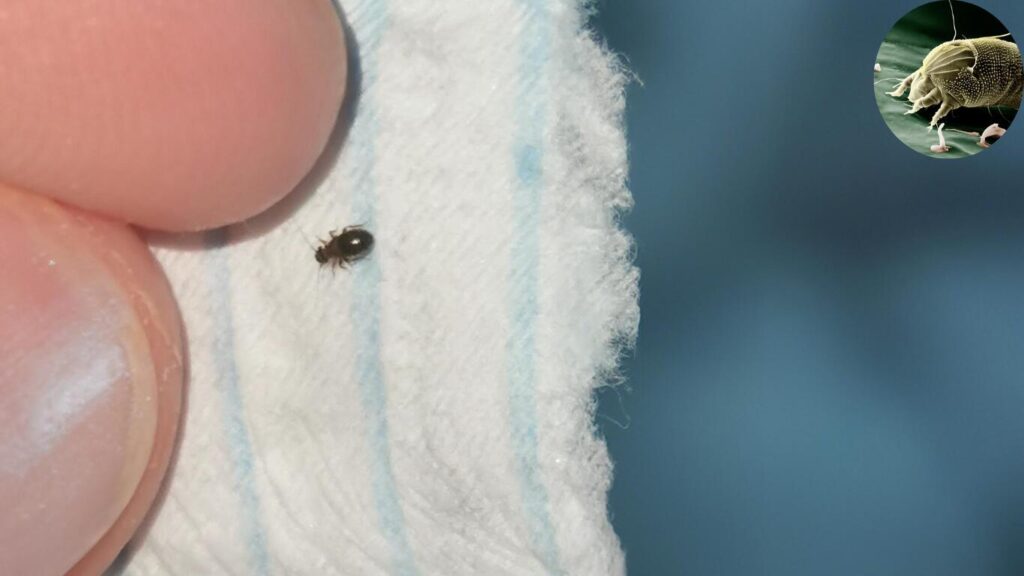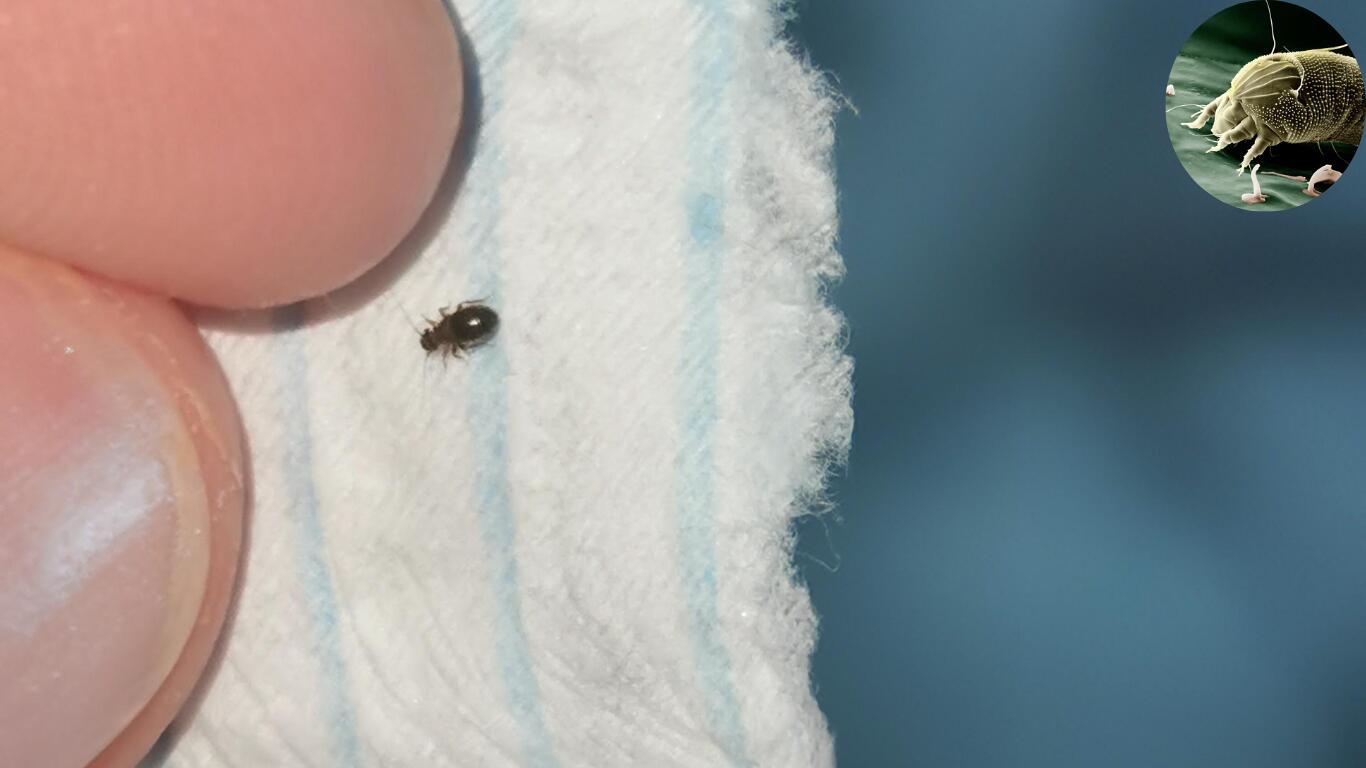You know that feeling when you wake up and your body is all itchy without explanation, and you see small flecks in your bedding and you’re thinking “What is going on?” If so, you may be sharing your room with uninvited guests — tiny mites. These little guys are far more common than you might realize, and knowing about their presence is vital to achieving a healthy and cozy home.
| Mite Type | Key Characteristics | Common Locations | Allergy/Health Impact | Control Measures |
|---|---|---|---|---|
| House Dust Mites | – Microscopic (0.25–0.33 mm) – Feed on human/pet skin cells – No mouthparts (don’t bite) | Mattresses, bedding, carpets, upholstered furniture | Allergens trigger respiratory issues (asthma, congestion) and skin rashes | – Dust-proof covers – Weekly hot-water washing – Dehumidifiers |
| Bird Mites | – Feed on bird blood – Clear until engorged | Near bird nests, indoor areas with bird activity | Rarely bite humans; may cause irritation if birds are present | Eliminate bird nests; seal entry points1 |
| Tropical Rat Mites | – Feed on rodent/human blood – Cause painful bites | Rat-infested areas (warehouses, old buildings) | Intense itching, dermatitis | Rodent control; treat infested areas |
| Chiggers | – Larval stage attacks humans/dogs – Thrive in warm climates | Grass, plants in southern U.S. | Itchy red bumps from bites | Avoid infested areas; use insect repellent |
| Clover Mites | – Red/green/brown color – Plant feeders | Cracks, crevices, near plants | No bites; leave red stains when crushed | Seal entry points; vacuum thoroughly |
| Oak Mites | – Live on oak trees – Bite causes rash | Outdoor oak trees; occasionally indoor via wind | Itchy rash with bumps | Avoid infested areas; use protective clothing |
| Rodent Mites | – Associated with mice/rats – Allergens detected in 80%+ U.S. homes | Bedrooms in multi-family homes, older buildings | Allergens linked to asthma/respiratory issues | Rodent-proofing; allergen-reducing bedding covers |
What Are Bedroom Mites?
Understanding Mites
Mites are small arthropods, relatives of ticks and spiders, that inhabit diverse environments. Though not all mites are harmful, some can create problems as serious as allergies and skin irritation. Their tiny size helps them hide, but their impact can be hard not to notice.
Common Types of Bedroom Mites
Different kinds of mites can invade your bedroom, each with its own unique qualities:
House Dust Mites
These are basically the most common type of mite that can be found in bedrooms. They devour dead skin cells and live in warm, humid places such as mattresses, pillows and carpets. They also don’t bite, but their droppings and body parts can cause allergies and asthma.
Bird and Rodent Mites
These mites may come inside via abandoned bird nests or rodents camped in the wall. Unlike dust mites, bird and rodent mites can bite humans, leading to itchy, red bumps.
Scabies Mites
Scabies mites are a type of parasitic species that dig into the skin of humans, resulting in very itchy skin and rashes. They are transmitted through direct contact, and they are a medical issue that needs to be treated.
Clover Mites
Clover mites, while harmless to humans, sometimes invade houses. They don’t bite but may leave red stains on surfaces when crushed.
How to Know if Your Bedroom Has a Mite Infestation
Afraid your room is crawling with mites? Here are signs to watch for:
You may also read(how many people can move into a one bedroom)
Physical Signs
- Black Dots on Linens: Dust mite droppings can look like small black or brown dots on bed linens and furniture.
- Red Stains: This could signal the presence of clover mites, which leave stains when smashed.
- Visible Movement: Bird or rodent mites may appear as moving specks on surfaces.
Symptoms of Mite Exposure
- Allergic Reactions: Dust mites cause sneezing, itchy eyes, nasal congestion, and skin rashes.
- Bites: Both bird and rodent mites cause red, itchy welts.
- Severe itching with visible burrows: Scabies mites lead to intense itching, primarily during the night, as well as visible burrows or blisters on the skin.
- OUT OF THIS WORLD: IF YOU’RE HAVING THESE SYMPTOMS, IT’S TIME TO LOOK INTO IT.
Common Types of Bedroom Mites
A. House Dust Mites
- Habitat: Dust mites thrive in mattresses, bedding, upholstered furniture and carpets.
- Feeding: Dust mites feed on flakes of human skin which humans continuously shed.
- Health Impact: Their droppings and body fragments are a prime behind-the-scenes engine of allergies and asthma, especially for those with sensitive respiratory systems.
B. Bird and Rodent Mites
- Entry Points: These mites enter homes when birds abandon nests or rodents enter the home.
- They Bite: Unlike dust mites, bird and rodent mites actively bite humans, which causes itchy red bumps.
C. Scabies Mites
- Transmission: Scabies mites are transmitted through skin-to-skin contact, so they’re common in crowded living situations.
- Symptoms: The mites tunnel under the skin, resulting in severe itching, and visible burrowing trails.
D. Clover Mites
- No harm, no foul: Clover mites do not bite or cause health problems, but they can become a nuisance when they enter homes.
- Staining: Crushing them leaves red splotches on walls, windowsills and furniture.
How to Identify Bedroom Mites
Mites are small, so identifying them can be tricky, but here’s how:
Visual Identification
| Type of Mite | Appearance | Visibility |
| Dust Mites | Microscopic, oval-shaped, pale-colored | Not visible to the naked eye |
| Bird/Rodent Mites | Tiny moving specks resembling black pepper | Visible on surfaces |
| Scabies Mites | Invisible, but cause burrows or rashes on skin | Not visible to the naked eye |
| Clover Mites | Red or brown, visible crawling on surfaces | Easily visible |
Tools for Detection
- Magnifying Glass: A handheld magnifier can help you identify larger pests like bird and clover mites.
- Microscopio: Los ácaros del polvo necesitan un microscopio para ser detectados.
- Professional Inspection: A pest control expert will help you properly identify the problem.
Health Effects of Mites in the Bedroom
A. Dust Mite Allergic Reactions
Dust mites are one of the top causes of indoor allergies and can lead to symptoms such as:
- Runny nose and sneezing.
- Itchy, watery eyes.
- Skin rashes or flare-ups of eczema.
B. Inflammation of Skin Biting Mites
- Bird/Rat Mites: These bites lead to red, itchy welts, the same way mosquito bites do.
- Scabies Mites: While infestations result in severe itching and burrows visible on the skin, you will need medical treatment.
C. Psychological Effects
An infestation can induce stress, cause anxiety, and disrupt sleep patterns which can easily lower your quality of life.
- How To Stop Bedroom Mites From Infesting Your Home
- The best way to keep mites out of your bedroom is prevention. Some tips for action are as follows:
A. Dust Mite Prevention
- Wash the bedding weekly: Launder sheets, pillowcases, and blankets in hot water (over 130°F).
- Use Allergen-Proof Covers: They help keep mattresses and pillows dust-proof.
- Control Humidity: Keep the humidity below 50% using a dehumidifier.
- Vacuum Often: Use HEPA filter vacuums to block allergens.
B. Prevention of Bird and Rodent Mites
This should include closing up any holes or cracks where a rodent could get inside.
- Delete abandoned bird nests with in your home.
- If the infestation is severe, consult a professional pest control service.
C. General Cleaning Practices
- Get to your bedroom and declutter to remove hiding places.
- Steam cleaning carpets and furniture will kill mites.
- How to Treat Infestations of Mites in the Bedroom
If mites have already invaded, here’s how to deal with them:
A. DIY Methods
- Suck Up: Pay attention to carpets, upholstery and mattresses.
- Infested bedding and clothing should be washed in hot water.
- Anti-Allergy Sprays: Use specific sprays that target and neutralize dust mite allergens.
B. Professional Solutions
- Prevention and control of Mites and fleas: Pest Control Services
- Medical treatment: For scabies, a dermatologist can prescribe creams or medications.
- Myths and Facts About Bedroom Mites
Myth: All mites bite humans.
Fact:
Dust mites bite, but they don’t, so they can make you allergic.
MYTH
You can get rid of dust mites entirely.
Fact:
You can kill them down to a rare nuisance, but not eradicate them.
When to Reach Out for Help
Whether you need professional assistance with:
- You have chronic health problems, such as bad allergies or symptoms of scabies.
- The infestation is massive and too big for you to control.
Final tips for a bedroom without mites
- Keep up a consistent cleaning schedule.
- Keep an eye on humidity levels, utilizing a dehumidifier if needed.
- Change old mattresses and pillows every 7–10 years.
Conclusion
They are tiny but bedroom mites can impact your health and comfort significantly. Learn their types, signs, and prevention methods, and take measures to ensure you sleep in a healthier environment. Don’t let these microscopic pests take over—protect your bedroom today!
You may also read(diy bedroom decor steps to crafting your fake tree)





